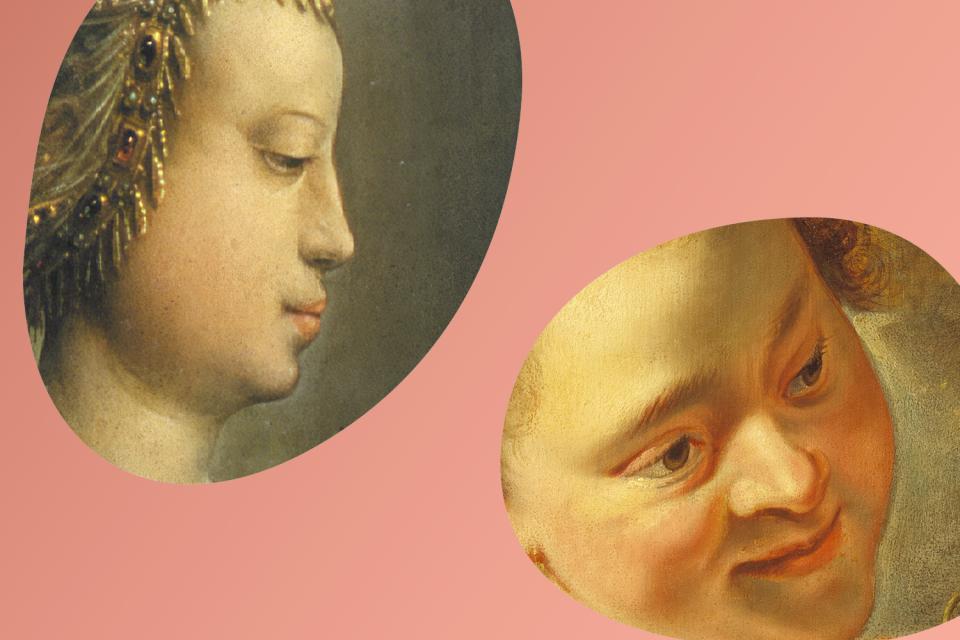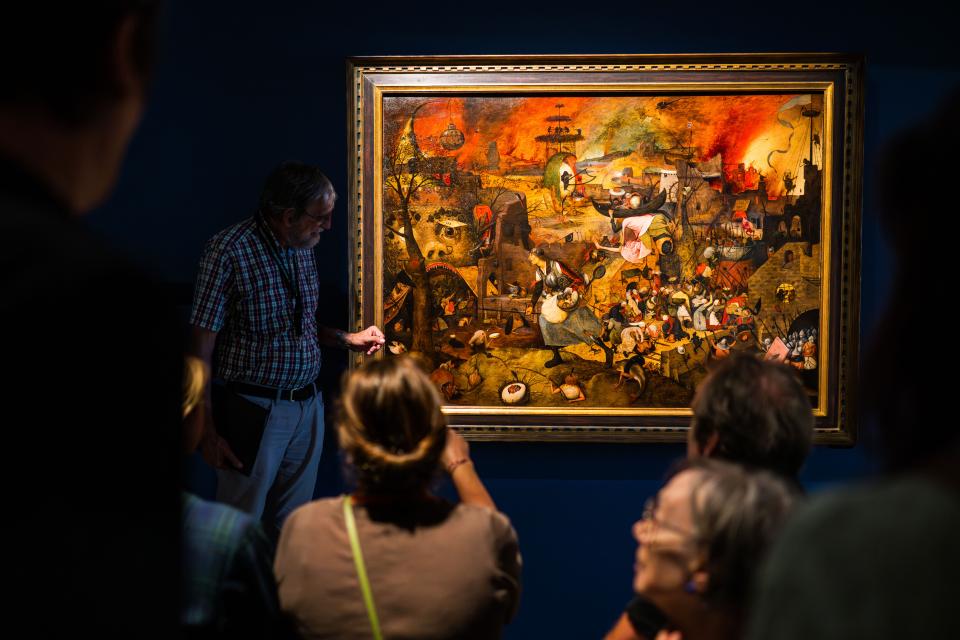Meyndert Sonck, the man on the left, was mayor of the Dutch provincial town of Hoorn. Here, his family keeps him company: his wife Agatha van Neck, holding a fan, and five children. The youngest is sitting at the back, in the nurse’s arms. It is no coincidence that Albert, the only son, is with his father. (The couple later had a sixth child.)
Best clothes
In the 1600s, the Golden Age of the Netherlands, painters received more and more commissions from the wealthy bourgeoisie, including for family portraits. The family members wore their best clothes for the occasion: in the case of the children, this was a batiste pinafore over their bodice and petticoat, with pillow lace work.
Is it a boy?
How do we actually know that Albert is a boy? Boys wore dresses until they were six or seven years old in the 17th century. We can tell that he is a boy from his plumed hat, his slightly more angular collar, which is like his father’s, and the medal on a chain that hangs diagonally across his chest. The latter ornament was exclusively for boys.
Specifications
- Jan Albertsz. Rotius (1624-1666)
- Portrait of Meyndert Sonck with Wife, Children and Nurse, 1662
- Oil on canvas





